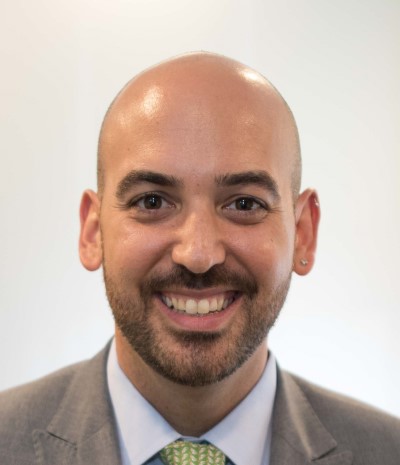At Northwell Lenox Hill Hospital in New York City, some of its key HCAHPS (Hospital Consumer Assessment of Healthcare Providers and Systems) scores – particularly those around responsiveness and coordination – simply were not where the organization needed them to be.
THE PROBLEM
The hospital ranked in the 19th percentile for responsiveness and in the 27th for RN communication. Its likelihood-to-recommend scores were similarly troubling, in the 49th percentile. And it also found that staff satisfaction was dwindling. Unit ward clerks were putting their engagement levels at 2.54 on a five-point scale.
“This was troublesome on multiple fronts,” said Joe Leggio, associate director and vice president of experience services at Lenox Hill Hospital. “First, the scores showed us that we were failing to meet the needs and expectations of many of our patients.
“Second, because there’s a gap of about eight weeks before you receive HCAHPS scores, we were learning about these failings far too late to address them effectively, only finding out about negative interactions months after they occurred.”
It was clear the organization needed to reimagine patient interaction and care – and have the tools to get real-time visibility into what was working and what wasn’t, he added.
PROPOSAL
Health IT vendor CipherHealth held the promise to help Northwell Lenox Hill Hospital not only implement rounding processes that would improve satisfaction, responsiveness and communication scores, but also to better understand how patients were feeling in the moment, without having to wait weeks for HCAHPS scores to come back, Leggio said.
“The technology was an integral element of a larger process and function change here at Lenox Hill,” he explained. “We used multidisciplinary teams to design a bottom-up reform of our unit ward clerk role, updating them to a more patient-facing patient service facilitator role. We undertook a similar bottom-up planning process to completely redesign an outdated pen-and-paper nurse leader rounding program.”
“After hitting a low of the 19th percentile in responsiveness in 2018, we jumped to 32nd in 2019 and 44th in 2020. We’re on track to be in the 60th percentile this year.”
Joe Leggio, Lenox Hill Hospital
“CipherHealth helped us understand how digital rounding could be a valuable tool in both the hands of our nurse leaders and patient service facilitators, using customized scripts and real-time reporting for a patient satisfaction full-court press with rounds undertaken by different roles within the hospital,” he added.
MEETING THE CHALLENGE
Staff members put tablets equipped with CipherRounds in the hands of their patient service facilitators and nurse leaders. With the help of the implementation and clinical teams at the vendor, staff designed rounding scripts for each, tying certain questions to key HCAHPS components, allowing team members to collect information easily, act fast when problems arise, elevate issues as needed and track progress over time, Leggio said.
“Our nursing leaders and patient service facilitators are expected to see every patient in the unit once a day for a patient round,” he noted. “That cadence not only allows us to address issues in real time, but it also demonstrates to our patients that we genuinely care about their comfort and wellbeing.”
RESULTS
The increases seen in HCAHPS scores have been “incredible,” Leggio said.
“After hitting a low of the 19th percentile in responsiveness in 2018, we jumped to 32nd in 2019 and 44th in 2020. We’re on track to be in the 60th percentile this year,” he reported. “Our likelihood-to-recommend scores started at the 49th percentile in 2018, then moved to 53rd, 69th and finally 70th so far this year. When it comes to RN communication, we started in the 27th percentile in 2018, hitting the 33rd in 2019, the 45th in 2020, and at 60th so far in 2021.”
Another important finding: Almost across the board, patients who received a round during their stay from either a patient service facilitator or nurse leader gave higher scores in their HCAHPS survey, he observed.
“And lastly, we’ve also seen improvements among our staff,” he said. “In 2014, we ranked an abysmal 2nd percentile for employee experience. Last year, we ranked in the 91st.”
ADVICE FOR OTHERS
“Something that was important for us at Lenox Hill was to not think of the technology as a standalone Band-Aid solution,” Leggio advised. “While we couldn’t have achieved these kinds of results without a digital rounding solution. The tool was just part of the equation.
“What I’m most proud of is the way in which we redesigned our patient engagement processes: We did so through an open and considerate planning process with participation from people at every level of our organization,” he continued. “We looked not only at our internal processes and data, but industry best practices and suggestions for optimization from our vendor.”
When it came to the technology, staff found immense success in customizing rounding scripts for specific organization and needs, he added. By tying rounding questions directly to HCAHPS domains, staff were able to drill down on specific problem areas and address them with focus and speed, he concluded.
Twitter: @SiwickiHealthIT
Email the writer: bsiwicki@himss.org
Healthcare IT News is a HIMSS Media publication.

